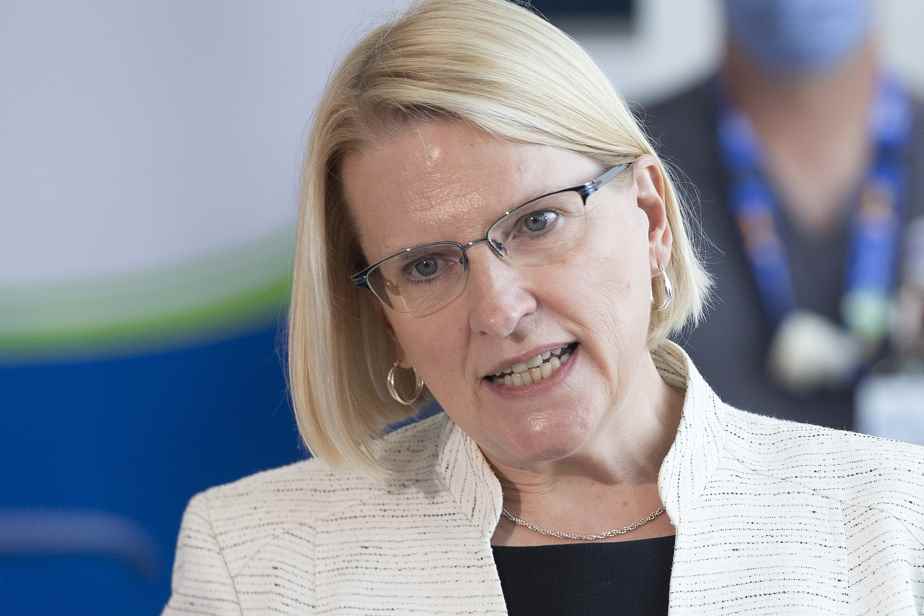(Toronto) Increasing publicly funded surgeries performed at private clinics, waiving exam and registration fees for internationally trained nurses, and sending patients awaiting a long-term care bed in a “temporary” home are part of Ontario’s efforts to stabilize the health care system.
Posted at 7:14 p.m.
Health Minister Sylvia Jones announced the plan on Thursday which aims to hire more medical professionals, free up hospital beds and reduce surgical waiting lists. The plan comes as nursing shortages have shut down emergency departments across the province throughout the summer for hours or days at a time.
The document hints at a greater role for services provided by the private sector, but covered by the public sector, with the government saying it will invest more to increase surgeries in children’s hospitals and existing private clinics covered by the Insurance -Health Ontario (OHIP). It is also considering options to further increase surgical capacity by increasing the number of such procedures performed in “independent health facilities”.
Mme Jones said Ontario needs to be “bold, innovative and creative” when looking for ways to improve the health care system.
“There are some who will fight for the status quo no matter what,” she said at a press conference announcing the plan. They are ideologically opposed to change or improvements. We will not accept this. We cannot accept this. People want better health care. »
Mme Jones did not answer directly when asked if she plans to allow more private clinics in Ontario.
“Health care will continue to be provided to the people of Ontario through the use of your OHIP card,” she said.
“We see the benefit of having some of these independent health care facilities that have been around in the province of Ontario for decades to take some of the pressure off of our health care partners and many of these health care facilities independents have agreements and work directly with their local community hospital,” the minister continued.
Against the privatization of care
Cathryn Hoy, president of the Ontario Nurses Association, criticized the plan to increase services in private clinics.
“It’s a blatant move that will line investors’ pockets, nothing more,” she said in a statement. The evidence is clear: privatizing health care produces worse health outcomes for our patients and results in much higher overhead costs that will be paid for by taxpayers. Ontario is diving deep into a privatization that will only benefit shareholders. »
Mme Hoy called it “puzzling” that the plan also outlines measures to support emergency department doctors, but not nurses.
“Dozens of emergency departments have been closed over the past few weeks due to a shortage of nurses,” Ms.me Hey.
“The government has missed a huge opportunity here to bolster nurses’ pay as a key to retention and recruitment to curb further closures,” she added.
The plan includes modifying a program that can deploy full-time nurses to multiple hospitals in a region and expanding a program for mid-career or retired nurses to mentor new nurses.
Province will temporarily cover exam, application and registration fees for internationally educated and retired nurses, saving them up to $1,500, and plans to invest up to $57.6 million over three years to increase the number of nurse practitioners working in long-term care homes.
Ontario is also expanding a program that allows physicians from across the province to help staff hospitals in northern and rural communities, launching a new program to provide emergency physician support and coaching to rural emergency departments, as well as a new program that connects medical residents with physicians in northern and rural emergency departments.
In the area of long-term care, the government plans to introduce legislation on Friday that will allow patients waiting for a bed to be transferred to a “temporary” home while waiting for a place in their preferred home. .
“At the end of the day, no, we’re not going to force anyone out of a home,” Long-Term Care Minister Paul Calandra said. The changes allow us to continue that conversation to explain to someone who is in a hospital why their needs can be met in a long-term care home. »
The government also plans to take 300 beds that had been used for COVID-19 isolation and make them available to people on waiting lists. He says it is possible to do this with 1,000 more beds within six months.
